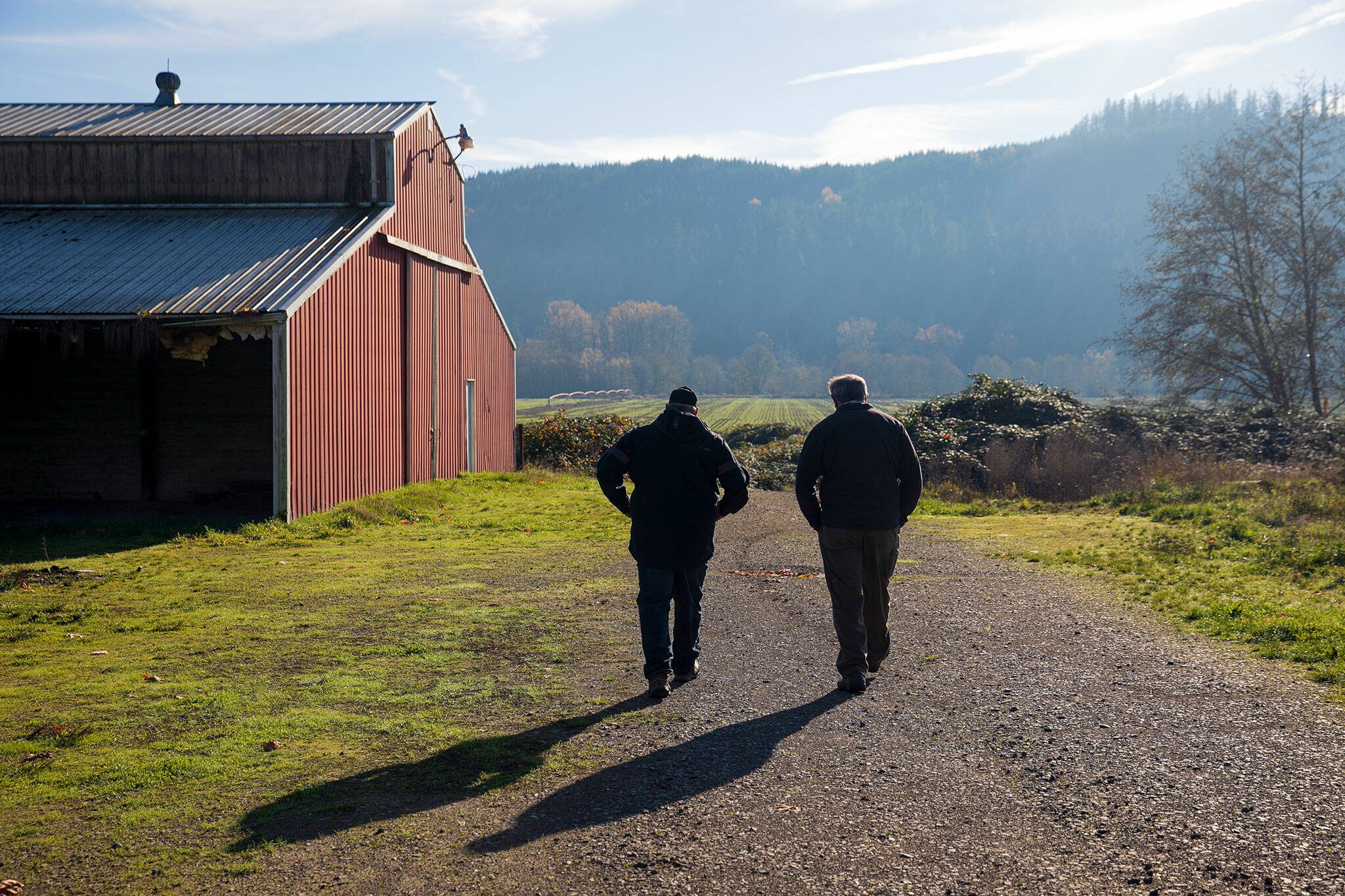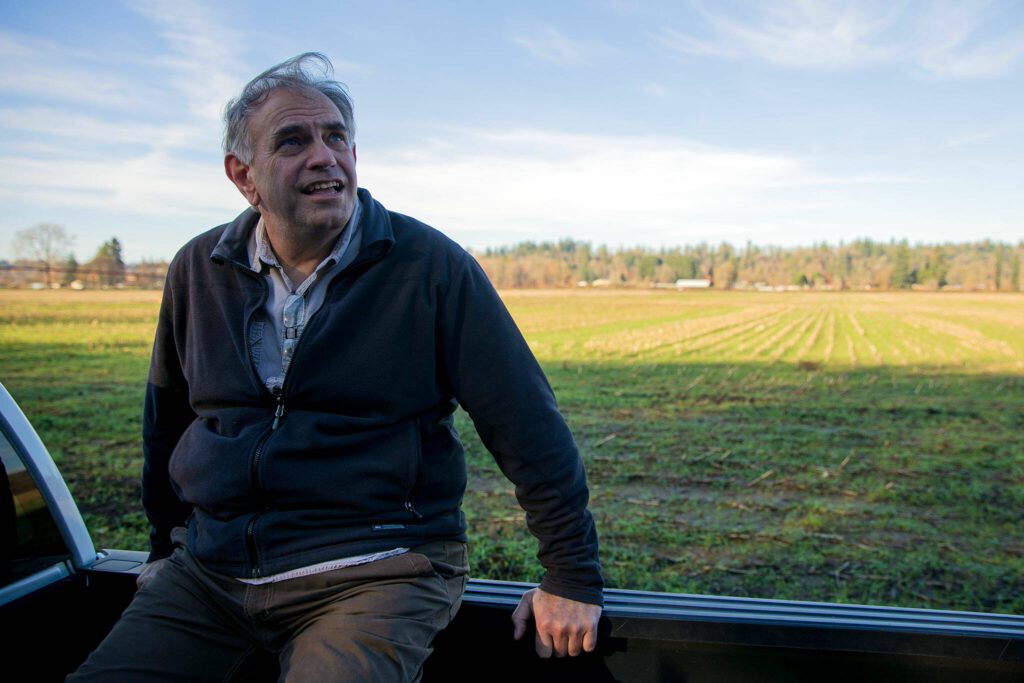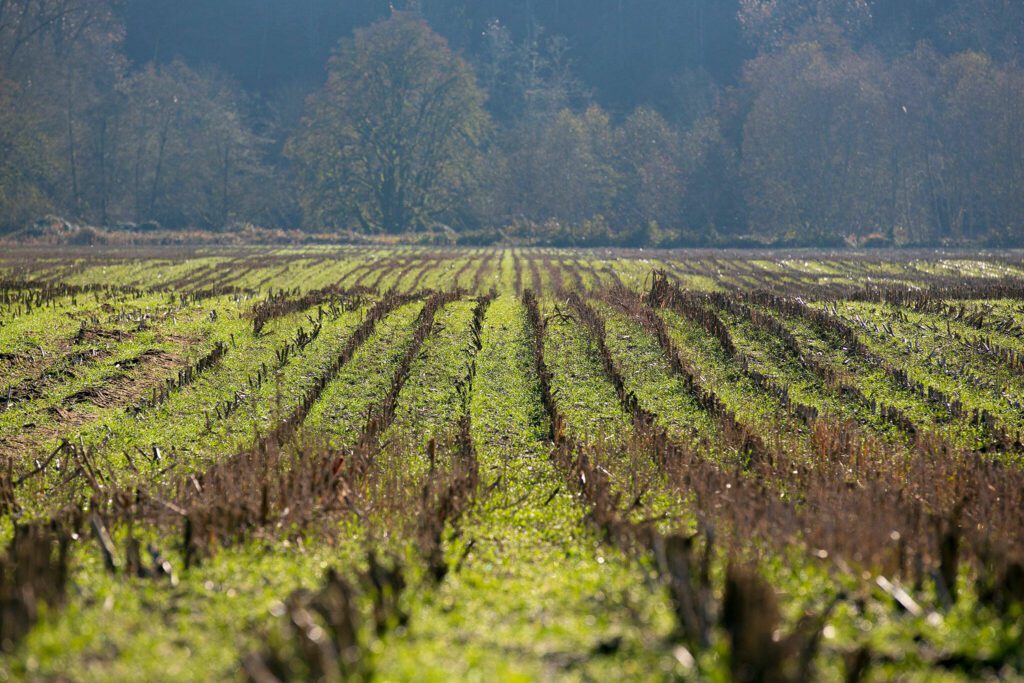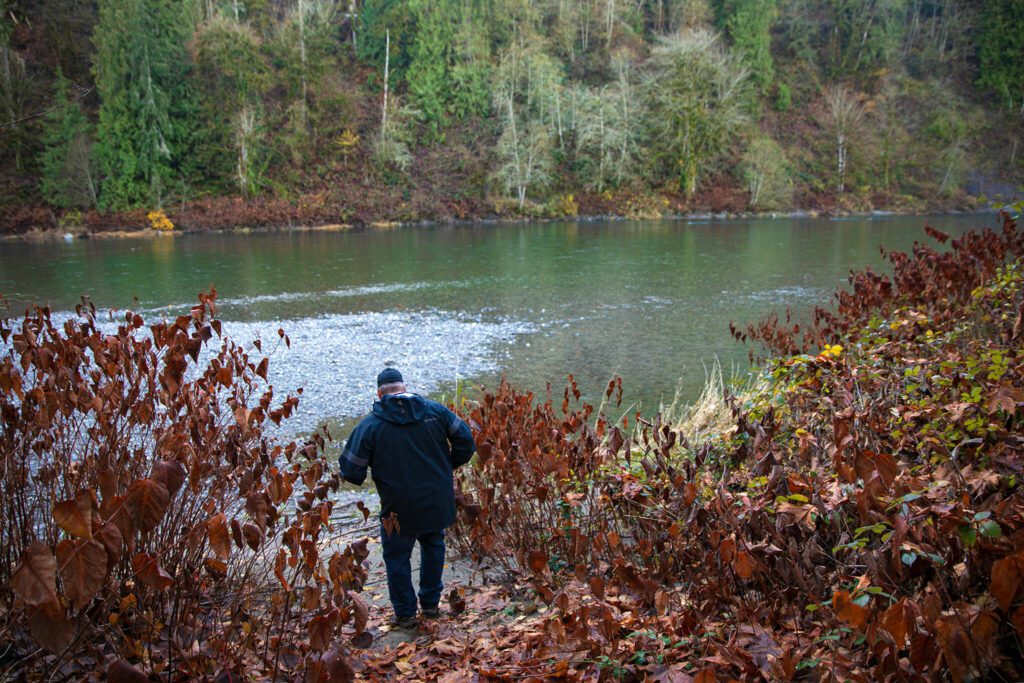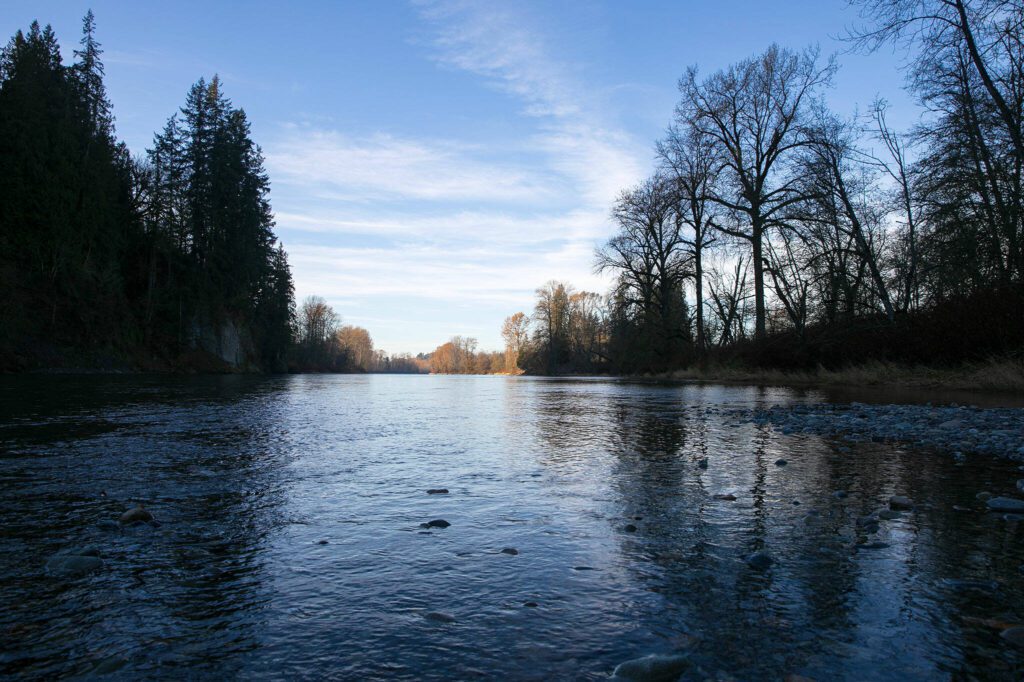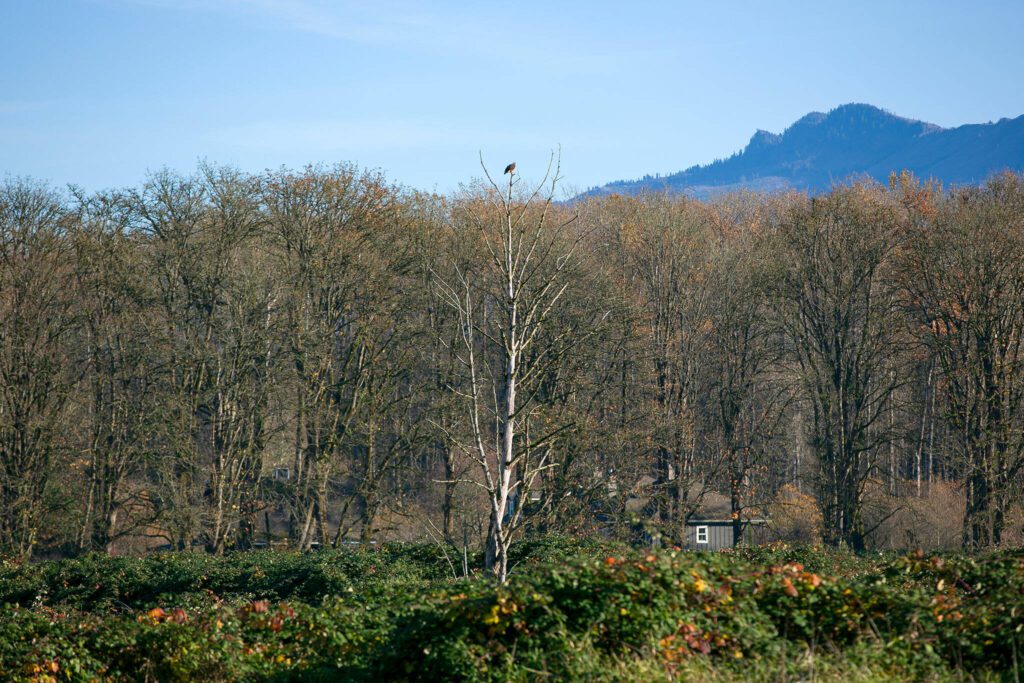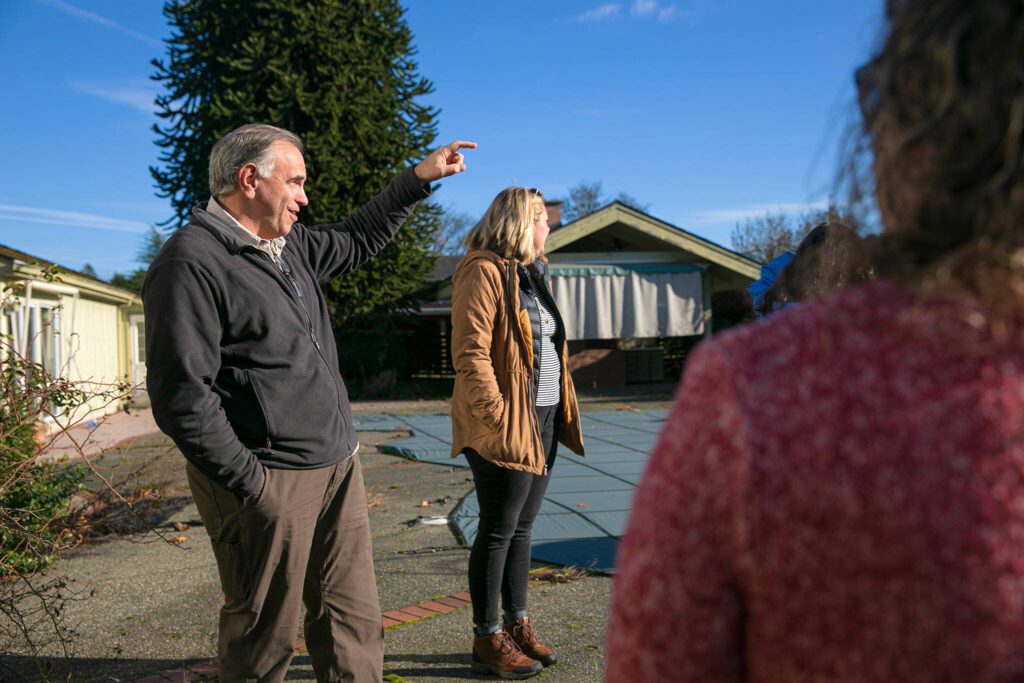MONROE — Almost 50 years ago, the Roth family moved to a 157-acre property off Sofie Road east of Monroe, with plans to expand their cattle and farm operation.
On a sunny November afternoon, the former Roth home sat empty, next to a covered in-ground pool blanketed by scattered leaves. Behind that — a wide stretch of field with hilly views in the distance.
“It was my dad’s dream,” said John Roth, looking out at the land.
Roth, who was 16 when his family moved, remembers his father plowing the land while listening to music with bulky headphones. And he recalls family picnics at the edge of the Skykomish River, which flows along the southern portion of the property.
He also remembers how the family cows stood in water well past their hooves, completely unfazed by flooding from the Skykomish.
Leaders from the Snohomish County Community Floodplain Solutions program work with landowners like Roth to purchase land prone to flooding, typically around Monroe and Sultan. By acquiring the land, leaders said they can preserve active farms and restore salmon habitat, in addition to helping address flooding problems for locals.
The Community Floodplain Solutions program received almost $10 million in August from the state Department of Ecology to start construction on floodplain restoration sites. Project leaders have helped restore 240 acres of floodplain and 12.3 miles of salmon habitat since the Floodplain Solutions program started in 2019.
After his parents died, Roth received several offers on the farmland, including from developers.
He said selling the land to the county in August felt like the best decision, in the name of stewardship. The silage on the property was leased out to another family, allowing farm operations to continue.
And now project leaders plan to modify and expand the channel network on the land, giving threatened Chinook salmon and other fish of the Skykomish more space to thrive and avoid predators from the main channel.
Parts of the property also suffer from the “bathtub effect” during seasonal flooding, where the water continues to rise with no outlet, said Jessica Hamill, project specialist for county Surface Water Management.
“You gotta give the water somewhere to go,” she said, about creating more side channels.
The county also plans to hire contracted conservation crews to remove invasive blackberries along the edge of the channels, said Brett Gaddis, senior habitat specialist for the county. He said they aim to plant 20 different species of native shrubs in the riparian zone around critical fish habitat.
Hamill said she and Gaddis are working with at least five other landowners along Sofie Road, in addition to Roth, with hopes of future restoration work in the area.
She said sometimes, people have adverse reactions to government involvement with their properties. Project leaders often meet with landowners in person and bring them to planned restoration sites, like the Roth property, to show people what they envision, she said.
Project leaders also created an interactive map that they’ve shared with landowners, which outlines completed, proposed and active floodplain restoration sites. Property owners can also recommend project sites to the county on the website.
Hamill said these discussions build essential trust.
“Without the collaborations,” she said, “we don’t have a program.”
Ta’Leah Van Sistine: 425-339-3460; taleah.vansistine@heraldnet.com; Twitter: @TaLeahRoseV.
Talk to us
> Give us your news tips.
> Send us a letter to the editor.
> More Herald contact information.
